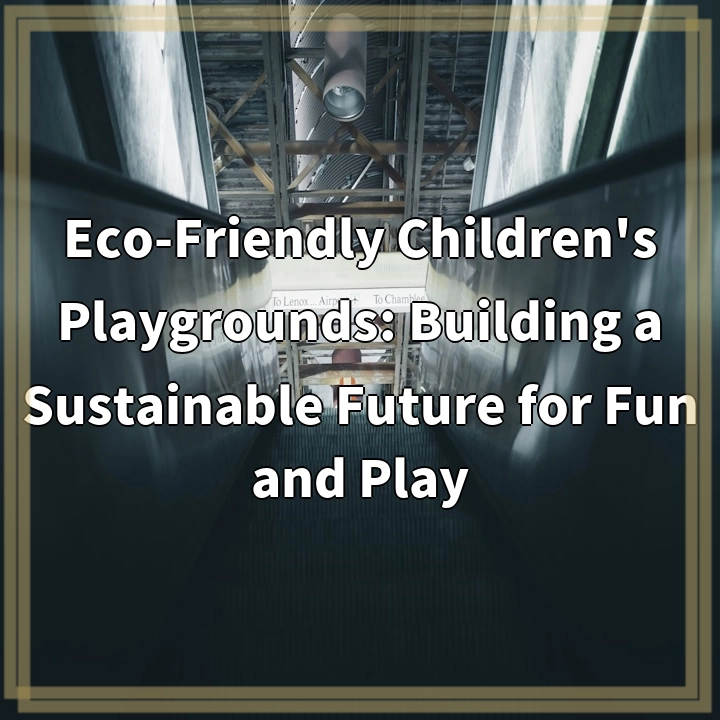
What it is:
Eco-friendly children’s playgrounds are designed and built with sustainability in mind. They prioritize the use of environmentally friendly materials, energy-efficient technology, and sustainable practices to create play spaces that are safe and conducive to a child’s development while minimizing their impact on the environment.
Real-World Problems:
Despite the many benefits of traditional playgrounds, they often contribute to various environmental and health issues. Some of the real-world problems associated with conventional playgrounds include:
Limited Green Space:
Many urban areas lack sufficient green spaces for children to play and connect with nature. This deficit of natural environments impacts their mental and physical well-being. By incorporating eco-friendly playgrounds, we can increase the availability of green spaces and promote a deeper connection with the environment.
Toxic Materials:
Conventional playgrounds typically utilize materials that contain toxins and hazardous substances, such as chemically treated wood, PVC, and lead-based paints. Children exposed to these substances are at risk of developing health issues. Eco-friendly playgrounds prioritize using non-toxic and sustainable materials, ensuring a safer environment for children.
High Energy Consumption:
Traditional playgrounds often rely on energy-intensive features such as electric-powered rides, lights, and water features. This heavy energy consumption contributes to greenhouse gas emissions and increases the ecological footprint. Eco-friendly playgrounds aim to minimize energy consumption by utilizing renewable energy sources, efficient lighting systems, and low-energy play equipment.
Water Waste:
Many conventional playgrounds have water features that consume significant amounts of water, leading to wastage and potential strain on local water resources. Eco-friendly playgrounds implement water-efficient designs, utilizing technologies such as rainwater harvesting and water recycling to minimize water waste.
Limited Accessibility:
Traditional playgrounds often lack inclusive design features, making it challenging for children with disabilities or mobility issues to fully engage in play. Eco-friendly playgrounds prioritize accessibility by incorporating ramps, sensory play equipment, and inclusive designs to ensure that every child can enjoy and benefit from their play experience.
Eco-friendly children’s playgrounds present a sustainable solution to these real-world problems. By creating play spaces that are environmentally conscious, we can ensure a healthier, safer, and more inclusive future for our children while nurturing their love for nature and promoting sustainable values.

Solutions:
Addressing the real-world problems associated with traditional playgrounds requires implementing sustainable solutions in the design and construction of eco-friendly children’s playgrounds:
Green Design:
Eco-friendly playgrounds prioritize the incorporation of green spaces, ensuring children have access to natural environments. This includes integrating elements such as trees, plants, and natural materials to create a more immersive and nature-filled play experience.
Safe and Non-Toxic Materials:
Eco-friendly playgrounds opt for non-toxic and sustainable materials, eliminating the use of hazardous substances. This ensures a safer and healthier play environment for children while reducing the risk of exposure to harmful toxins.
Energy Efficiency:
Eco-friendly playgrounds focus on reducing energy consumption by utilizing energy-efficient technologies. This includes utilizing renewable energy sources like solar power, implementing LED lighting systems, and incorporating low-energy play equipment.
Water Conservation:
Eco-friendly playgrounds employ water-efficient designs and technologies to minimize water consumption. This includes rainwater harvesting systems, water recycling, and incorporating low-flow water features.
Inclusive and Accessible Designs:
Eco-friendly playgrounds prioritize inclusive designs to ensure that all children, regardless of their abilities, can fully participate in play activities. This includes incorporating wheelchair-accessible ramps, sensory play equipment, and inclusive play structures.
By implementing these solutions, eco-friendly children’s playgrounds create a positive impact on both the environment and the well-being of young children. They promote a love for nature, sustainable values, and a healthier future for generations to come.















